Why pet rat cage cleaning is so important
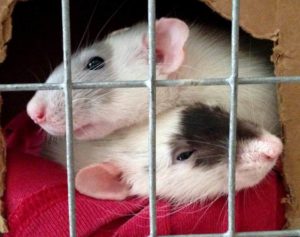 If you smell any odors coming from your rats’ cage, it means you waited too long to clean it. Just think, whatever you can smell is 100X stronger (and more damaging) for your rats. Rats’ sense of smell is so refined they can detect the scent of land mines and tuberculosis. Not only that but rats can smell in stereo!
If you smell any odors coming from your rats’ cage, it means you waited too long to clean it. Just think, whatever you can smell is 100X stronger (and more damaging) for your rats. Rats’ sense of smell is so refined they can detect the scent of land mines and tuberculosis. Not only that but rats can smell in stereo!
If feces are not disposed of daily, the resulting bacterial growth may be harmful if inhaled or ingested. Urine build-up over time produces ammonia fumes which can trigger respiratory disease. Any damp bedding, litter or cloth can harbor fungal growth. It’s highly recommended that you litter box train your rats. Using litter boxes makes it much easier to keep your rats’ home in pristine condition.
By keeping their cage clean, you’ll help your pet rats live longer, healthier lives. Diseases (such as mycoplasma) and parasites (such as mites) can be prevented or at least lessened by regular cleaning.
Cleaning Routines
Daily
- Replace all soiled bedding and litter with fresh bedding and litter
- Besides a visual inspection, perform a sniff test for all cloth items – A sniff test is just like it sounds….Put your nose right up to the cloth and if it smells anything other than fresh, remove and replace it.
- Empty water bottles and refill with fresh water
- Remove any food not eaten
 Twice Weekly
Twice Weekly
Vacuum (or sweep) and dust the room in which your rats’ cage is located:
-
- While dusting, place a cover over the cage so dust gets doesn’t get inside.
- If the room is carpeted, place your rats in their travel carrier and take them to another room so the loud vacuuming sounds don’t disturb them.
Weekly
- Thoroughly clean all water bottles using a bottle brush and dish detergent. Rinse fully. Water bottles and sipper tubes can also be placed in the top rack of your dishwasher for “double cleaning”. Again, be sure to rinse completely even after they’ve been washed in the dishwasher.
- Take everything out of your pet rats’ cage
- Wash the cage (if needed). You will not need to wash the cage if your rats’ cage floors are always completely covered—such as with fleece. You only need to wash your rats’ cage if it has particles from feces and/or food or any other organic matter built up on it. If the cage itself has not accumulated organic material, you can proceed to the disinfecting and skip the washing.
- Disinfect
How to wash and disinfect your pet rats’ cage
This video shows step by step how to wash and disinfect your pet rats’ cage. A few updates since this video was made are:
- I am now recommending that your rats’ cage be disinfected weekly. (In the video I said to “deep clean every 1-2 months”.)
- It is not necessary, as stated in the video, to wash your cage with detergent prior to disinfecting. As mentioned above, you only need to wash your cage with detergent if there’s caked up organic material on the wire of the cage.
- Instead of using Oxyfresh Cleansing Gelé , I’m now recommending that you use diluted bleach (16 parts water : 1 part bleach) when disinfecting. Another product that’s been brought to my attention that’s both effective and safe is CleanSmart.
If you prefer written instructions, continue reading below:
Supplies Needed
For washing the cage (if needed):
- Scrub brushes (assorted sizes), toothbrushes for smallest areas. Even if you don’t need to wash your cage, it’s still a good idea to wash and scrub any plastic litter boxes you’re using before moving on to disinfecting.
- Spray bottle filled with diluted dishwashing detergent. (Squeeze out enough detergent to cover the bottom of an empty spray bottle, then fill to the top with water) – Dawn dishwashing detergent (which also helps wildlife) works exceptionally well due to it’s grease cleaning capabilities. As noted above, this detergent is only needed to clean off caked organic materials or for scrubbing any plastic litter boxes you’re using.)
For disinfecting the cage:
There are several products you can use for disinfecting your pet rats’ cage.
Bleach: Mix 16 parts water to 1 part bleach in a spray bottle. My current vet whom I admire and trust greatly advocates using bleach for disinfecting. Until the last few years I was very reluctant to use something as strong as bleach, but I’ve decided to go with what my vet is recommending. Because the bleach is so diluted I can barely smell it myself while I’m using it. As long as you rinse well after using it, I’ve found bleach to be both safe and effective. It has not harmed my cage at all either.
Other products that may be used:
- CleanSmart – One of my website readers asked me about using this product to disinfect her pet rats’ cage. I’d never heard of it so I emailed my vet. My vet wrote back “I think it is fine to use hypochlorous acid. It’s very effective and safe.”
- Oxyfresh Cleansing Gelé is no longer available. Oxyfresh cage cleaning spray may be a good substitute. It contains Stabilized Chlorine Dioxide. On Chewy’s website, it’s noted that “Chlorine Dioxide is known as a disinfectant; however, we have not done the required testing with EPA to classify as such for disinfectant, antibacterial, antiviral, and fungal.” It’s notable that this website shows promising information about the capabilities of Stabilized Chlorine Dioxide.
- Have several bath towels on hand for drying your cage, litter boxes and any wheels or other toys you’re disinfecting.
For machine washing cloth items:
- Free & Clear Laundry Detergent (unscented and hypoallergenic)
- Bleach (add 1/2 cup or follow label recommendations)
- If you prefer not to use bleach, white vinegar (add one cup to washer) helps cut through odors.
 Preparation
Preparation
- Prepare a small cage or carrier to place your rats in while you clean. You can have them in a cat carrier, collapsible cage or any spare cage you have on hand. For babies, you need to have bar spacing and gaps closer together. This carrier works well for temporarily housing/transporting babies. Make the cage or carrier comfy for them with a small litter box (if they’re litter trained), a box for sleeping in, soft bedding, food and water. A few chew toys thrown in is always a good idea, too.
- Take everything out of the cage including your rats.
- Place your rats in the travel carrier/extra cage. (I tell them it’s their “hotel room”.)
- Use free & clear laundry detergent in your washing machine to clean all cloth items. Add 1 cup of distilled white vinegar to your wash. (The vinegar helps cut through residual urine odors.)
- Throw away anything that can’t be cleaned such as cardboard boxes or items made of wood.
- Clean hard plastic items such as sputniks, other types of hideouts and toys the same way you clean and disinfect the cage.
- Decide where you want to clean your pet rats’ cage – The best place is outdoors. If this isn’t an option for you, smaller or medium size cages can easily be cleaned in a bathtub or shower stall. If you have a larger cage and are unable to clean it outdoors, you can still clean it in the room where it’s located. Place a large plastic tarp underneath and around your cage to avoid getting water on your floor. To rinse, use rags or washcloths soaked in a bucket or large bowl of clean water.
STEP 1 – Wash (if needed)
Spray the entire cage using your spray bottle filled with dish detergent diluted with water. Use your scrub brushes to scrub in each direction to loosen up and get rid of all dirt and debris. Start at the top of your cage and work your way down so you won’t knock any dirt onto an area you’ve already cleaned. It’s very important to get rid of all dirt particles before using your disinfectant. If you skip using detergent first to get rid of all the dirt, the disinfectant won’t be effective on the actual surfaces of the cage. If your cage has a bottom tray, remember to spray and scrub it as well.
STEP 2 – Rinse
Rinse off the detergent thoroughly. If you’re able to clean your cage outdoors, a garden hose works perfectly for rinsing. If you’re cleaning your cage indoors, turn on the shower to rinse. A detachable shower head with a hose is helpful.
STEP 3 – Disinfect
Rinse cage and all other items thoroughly prior to disinfecting. You do not have to dry after rinsing.
Spray the disinfectant onto all surfaces including the bottom tray.
Leave the disinfectant on for at least 10 minutes.
STEP 4 – Rinse
Rinse all surfaces thoroughly.
STEP 5 – Dry
Towel dry.
If you’re cleaning your cage outside, (and if it’s a warm, sunny day,) leave your cage out in the sun for an hour or so after towel drying.
For extra thoroughness, you can use the same methods above to clean the walls surrounding your rats’ cage.
 Time to Redecorate
Time to Redecorate
Once your cage is back in its normal spot, fill it with new boxes, freshly washed bedding and hammocks and clean litter boxes. All that’s left is to return your rats to their home. They’ll love checking out their redecorated digs!
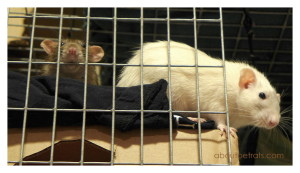 Twice Weekly
Twice Weekly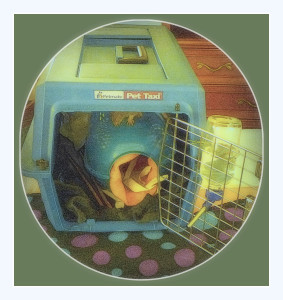 Preparation
Preparation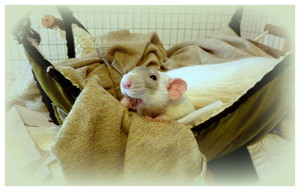 Time to Redecorate
Time to Redecorate

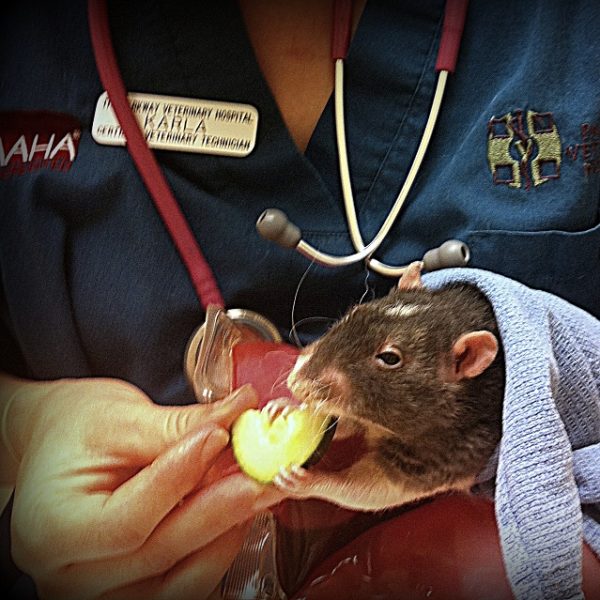
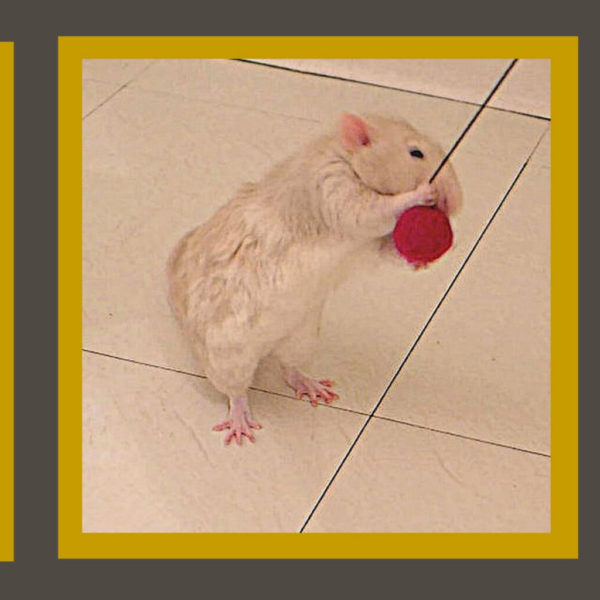
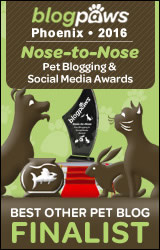

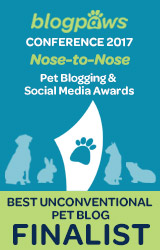
I would never clean my rats cage with bleach or put it anywhere near my rats. I have asthma and bleach has a really negative affect on my breathing so I can only imagine what it must do to the little rats who are highly susceptible to respiratory infections. Do not use bleach, please.
Hi Belinda,
I agree that bleach should never be used in close proximity to rats. Just in case it isn’t clear in my post above: Before cleaning my rats’ cage, I take my rats outside of their cage and place them in a carrier. I then take everything out of their large cage to be recycled, laundered or disinfected. I wash my cage outdoors, far away from where my rats are inside their carrier. After using the diluted bleach to disinfect everything, I thoroughly rinse it off so there is no bleach remaining. I rinse it off so thoroughly you can’t even smell that bleach was used.
Have you found a solution that works well for disinfecting your rats’ cage (without being an irritant to your asthma)? There is a product I’m going to add to my post above called CleanSmart. It was brought to my attention by a reader who emailed me about it. I checked with my vet and she said it’s very effective and safe.
If you’ve found anything that works great for you, I’d love for you to share it. It’s always great to learn more about products that can be used safely to disinfect our rats’ cages.
Jasmine | About Pet Rats
PS: I tried emailing you at the address you gave when making your comment. Unfortunately, my email didn’t go through. I received an error message that said “the address couldn’t be found, or is unable to receive mail”.
When you purchase anything from Amazon through the above link, About Pet Rats receives a small commission at no extra cost to you. Your support is greatly appreciated!
How do you dilute the Oxyfresh with water?
Hi Mary,
Thanks for asking your great question! I can see how the wording I was using was a bit confusing. I’ve revised it to say “Squeeze enough Oxyfresh Cleansing Gelé so it covers the bottom of the spray bottle, then fill to the top with water.”
I have to let you know, however, I will be revising this page. My current vet has recommended I start using diluted bleach for a disinfectant. I went for years avoiding bleach but now I am using it. I hope to have this page revised within the next month.
Thanks again for your question.
Best Wishes to You & Your Rats,
Jasmine | About Pet Rats
Oxyfresh Cleansing Gele
First, thank you for your valuable information! Your site has been my primary reference for caring for my two new rats.
The active ingredient of Oxyfresh Cleansing Gele is called by the company’s registered name, “Oxygene”, which is “stabilized chlorine dioxide”, which in turn is simply sodium chlorite. The term “stabilized chlorine dioxide” is misleading, as there is no chlorine dioxide present until activated with an acid. See their description of this: https://oxyfresh.com/wp-content/uploads/2016/08/chlorinedioxide.pdf
Another common product on the market with sodium chlorite as the active ingredient is Oxine: https://smile.amazon.com/Bio-Cide-International-Oxine-Gallon/dp/B000HT7H8W/ The EPA application for Oxine states, “The active biocidal [meaning capable of killing bacteria] component of Oxine system is free chlorine dioxide. Unactivated Oxine in the neutral to mildly alkaline pH range is bacteriostatic [meaning inhibiting growth of bacteria, but not killing them]. For higher level microbial control, such as disinfection and sanitation, activation of Oxine is required to generate free chlorine dioxide.”
Sodium chlorite, while relatively safe, is not non-toxic: https://pubchem.ncbi.nlm.nih.gov/compound/sodium_chlorite#section=Non-Human-Toxicity-Excerpts
From this research, I’m concluding that Oxyfresh Cleansing Gele is at best “bacteriostatic”, and is a much more expensive solution than Oxine. For now, I’m going to stick with vinegar and maybe rubbing alcohol or peroxide.
See also this information from the CDC about disinfectants: https://www.cdc.gov/infectioncontrol/guidelines/disinfection/disinfection-methods/chemical.html
Hi Johann,
Thank you for your comment. I appreciate your feedback and it makes me so happy to know my site has been your primary reference for caring for your two new rats. CongRATulations on your new family members!
You bring up some excellent points about cage cleaners. I always welcome new information and find I am constantly learning about how to optimally care for my rats—including the choices of cage cleaning products.
My favorite source online on the topic of cage cleaning products is found in The Rat Guide’s page on Cage Cleaning. You’ll see they have a list of cleaning and disinfecting solutions. The list includes whether or not each product is bactericidal, virucidal and/or fungicidal. When doing my monthly deep cleaning and disinfecting of my rats’ cage I prefer to use a product that has all three properties.
Hearing from you has helped me realize it’s definitely time to revisit best-practice cage cleaners. I had been doing further research on the Oxyfresh and have found that there’s a stronger Oxyfresh product than the Cleansing Gelé and it’s one that’s used in dental offices. I don’t like the idea of using the heavy duty products found on The Rat Guide’s list such as Parvosol or Spectrosol. However, these solutions are bactericidal, virucidal and fungicidal. Another product I’d like to do more research on is Cavicide which also has all three properties.
As you know, it’s a big decision to make when selecting a cage disinfecting solution. We have to balance choosing a product that’s safe while still being effective.
I’ll write more here as soon as I’m able to do further research. In the meantime, I greatly appreciate your sharing your insights and research into the Oxyfresh Cleansing Gelé’s properties and ingredients.
Best Wishes to You & Your Rats,
Jasmine | About Pet Rats
My previous comment wasn’t clear on an important detail: sodium chlorite, the “stabilized chlorine dioxide”, and the main ingredient in Oxyfresh, becomes chlorine dioxide when mixed with an acid. Any of the stronger Oxyfresh products likely just come with some sort of acid to mix with the principle cleaner and activate the chlorine dioxide. Chlorine dioxide is potent, and certainly would require good airing out before returning rats to the room.
That previous research lead me to conclude that the most effective disinfectant which is also relatively safe, is diluted household bleach. Unfortunately, it’s also highly corrosive (goodbye metal cage!), and a serious lung and skin irritant. I’ll use it for a deep cleaning a few times a year, making sure to let the cage and room air out for many hours before putting the rats back.
For the time being I have settled on using Chlorhexidine 2% for cleaning (usually diluted to 0.2%), as it seems to be much safer than bleach, and is readily available at my local farm store (or Amazon: https://smile.amazon.com/Durvet-Chlorhexidine-Solution-fl-oz/dp/B000HHSD8M/). It is not antiviral.
Hi Johann,
I greatly appreciate your sharing your further thoughts and research on the best disinfectant to use after cleaning a pet rat cage.
As I mentioned previously, choosing a disinfectant is not an easy decision to make. It’s such a difficult balance between finding a product that is virucidal, bactericidal and fungicidal without it’s being dangerous for a rat’s health. Even after revisiting all of the options available, I’m choosing to remain with Oxyfresh Cleansing Gelé…at least until I can get more detailed product information on Oxyfresh’s Dent-A-Gene. There’s very little information about Dent-A-Gene online so I plan on calling Oxyfresh this week in order to learn more about it.
I’m basing my decision to stay with Oxyfresh Cleansing Gelé (and possibly moving on to using the Dent-A-Gene) mostly from articles I’ve read written by avian specialists. Both rats and birds have very delicate respiratory systems. This article, in particular, is excellent and contains information on both Oxyfresh’s Cleansing Gelé and their Dent-a-Gene: A NEW CAGE AND AVIARY DISINFECTANT by Ross Bishop
Thanks again for sharing your ideas and information. It’s always helpful to discuss options with others who care about the health and well-being of their beloved rats.
Best Wishes to You & Your Rats,
Jasmine | About Pet Rats